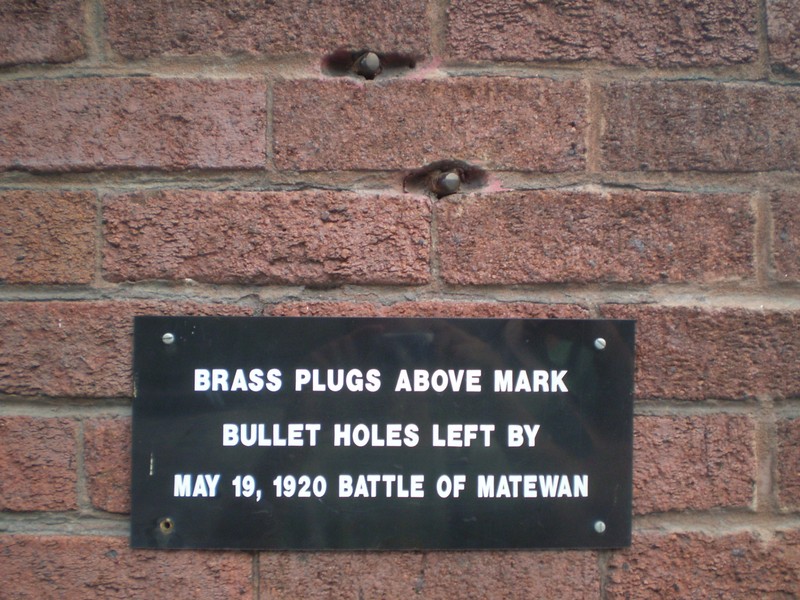The Matewan Massacre
Introduction
Text-to-speech Audio
Images
Bullet holes from the shootout.

Historical Marker.

The town of Matewan.

Backstory and Context
Text-to-speech Audio
The Battle of Matewan, more commonly known as the Matewan Massacre, was a battle fought between the Baldwin-Felts Detective Agency and local miners. It took place in Mingo County, West Virginia, and was another instance in history where a struggle for better working conditions and salaries was waged. Miners during this time were paid extremely low wages in spite of working in unsafe conditions. Instead of being paid in cash, the miners were paid in a wage known as scrip, which could only be used in company stores to buy company products or directly deducted from their pay as rent expenses. As such, the company was not losing money because the wages paid to their miners was being deposited back through their stores.
The success and effectiveness of strikes across the United States led the local miners of Matewan to sign to the Union. As a result, the coal company, in the case of the Matewan Massacre it was the Stone Mountain Coal Company, retaliated in order to control their miners. A group of Baldwin-Felts detectives was hired to evict the miners and their families from their homes. This unfair treatment led to a bloody and brutal shootout on May 19, 1920 that left seven Baldwin-Felts detectives and two miners dead. Although the Massacre was a brief but bloody exchange, “the events that followed in its wake included a 28-month strike that led to two dozen deaths, West Virginia’s longest and most controversial murder trail to date, a United States Senate investigation, the retaliatory assassination of Sid Hatfield, and the largest armed civilian insurrection since the Civil War” (Bailey, Matewan Before the Massacre, 7). Despite these events, the brave stand made by the miners, paved the way for fair pay and better working conditions within southern West Virginia.
The Battle of Matewan was a major factor in the end of the totalitarian reign of coal company control over the miners of West Virginia. The battle led to the creation of the Wagner Act, an act responsible for the creation of minimum wage, better working conditions for miners, and shortened the amount of days worked. The battle also allowed the miners to take advantage of becoming part of the Union.
Why visit this national landmark some may ask? Mingo County is known as “Bloody Mingo” because of its labor strife and corrupt politics. Visitors to the historic town of Matewan will learn about Mingo County’s mine wars and the gruesome battle that spurred the way toward unionization. Mingo County is also in the heart of the coalfields of West Virginia. What better way to relive the past than to visit the area where the miners once lived and worked? The legendary Matewan Massacre is a battle that helped forever change the lives of all miners across the nation in regards to fair labor and safe working conditions.
